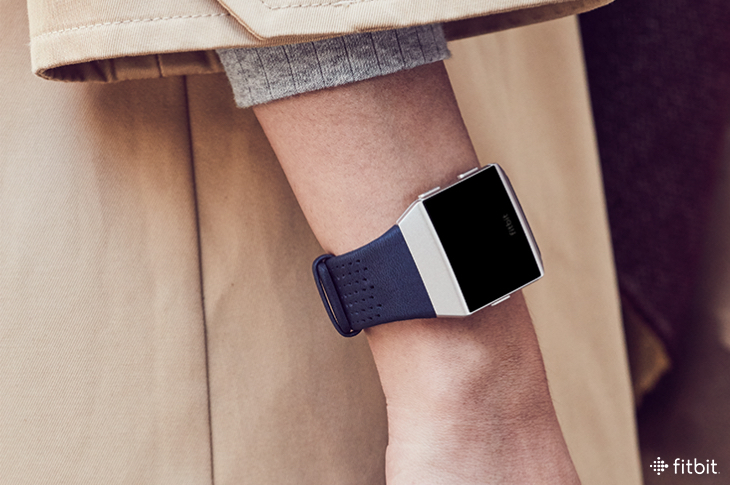
From the improved heart rate sensor to the insanely crisp Corning Gorilla Glass 3 color display, to the nano-molded aerospace-grade aluminum unibody watch case, Fitbit engineers maximized every aspect of Fitbit Ionic while designing it from the ground up. The result? Fitbit’s strongest, lightest, most ergonomic GPS watch to date—a timepiece that transitions effortlessly from the gym to the office to the museum to the bar to anywhere else your day takes you.
But Ionic’s story doesn’t end there. A watch this advanced demanded advanced accessories—bands that would be as durable and eye catching as the device itself. That’s why Fitbit turned to Horween Leather Company, a 112-year-old Chicago-based tannery.
“Whenever we work on a new product, we think about how we can step up our game,” says Youmi Bang, Fitbit’s Senior Product Marketing Manager in accessories. “By working with Horween Leather Company, which is known for using traditional processes that create high-quality leather—something you don’t see a lot in the leather industry anymore—we were able to elevate our accessories. Fitbit Ionic may be packed with advanced features but these Horween Leather bands help it blend into everyday life.”
Below, a little bit more about Horween Leather Company, and why you’re going to love wrapping its supple leather bands around your wrist.
10 Reasons Why Fitbit is Excited About Horween Leather—And You Will Be Too
1. Horween Leather Company was founded in 1905 by Isidore Horween, a Ukrainian immigrant and great grandfather of the current president, on Division Street in Chicago. The company moved once (to Chicago’s north side in 1920) and is now one of only a handful of tanneries left in the United States.
2. Arnold Horween Sr. and his brother Ralph both played football at Harvard University and then professionally for the Chicago Cardinals using the assumed surname “McMahon” so as not to upset their mother. It was Arnold who developed the company’s official football leather and established the business with Wilson for the NFL.
3. Five generations later, Horween is still family operated. Arnold “Skip” Horween III, has been president since 2003; his son Nick became vice president in 2008.
4. Horween Leather is now well known for its use across reputable fashion brands and famous vendors such as Shinola, Nixon, Frye, NFL footballs and NBA basketballs.
5. Horween’s biggest customer remains Wilson Sporting Goods, the makers of American footballs. Horween makes football leather for 1000’s of footballs produced per day.
6. Horween currently has more than 100 tannages available.
A post shared by Nick Horween (@horweenleather) on
7. The leather used for Ionic’s bands is handcrafted and tanned in Chicago using proprietary tanning formulations. These include blends of vegetable extracts along with emulsified or unrefined oils and waxes, which make the leather both soft and durable
8. It takes up to 10 days to dry the leather, which is done by hanging the leather in special dry rooms. This process provides a leather that has a tight break.
A post shared by Nick Horween (@horweenleather) on
9. Ionic’s perforated leather band is full-grain, meaning its surface has been left intact to show off the hide’s natural characteristics.

10. The bands are designed to mold to the wrist and develop an aged patina finish over time.
Learn More About Horween Leather for Fitbit Ionic
Fitbit Ionic’s leather accessories, made of Horween leather and other leather materials, are available in two colors—cognac and midnight blue—on Fitbit.com.
The post Fitbit’s New Leather Bands Are Kind of a Big Deal. Here’s Why. appeared first on Fitbit Blog.
Source: Fitbit Blog
—